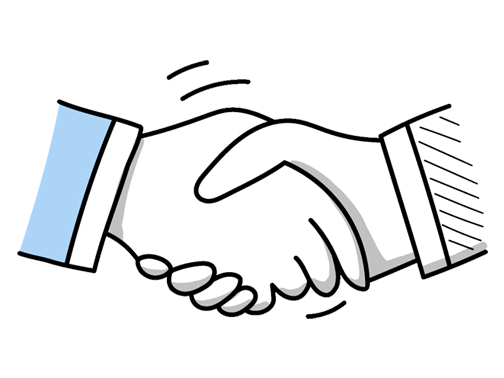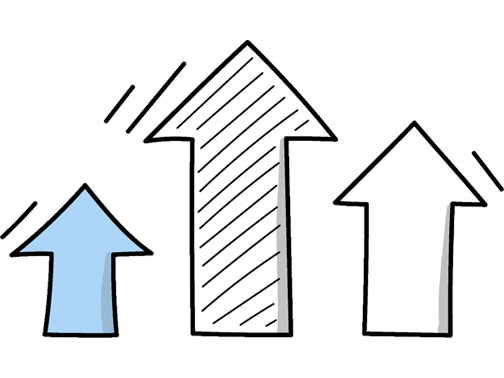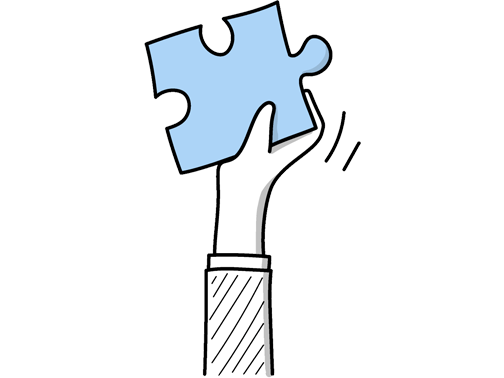Corporate Communications Director Interview Questions (2025 Guide)
Find out common Corporate Communications Director questions, how to answer, and tips for your next job interview
Practice Interviews Online - Identify your strengths and weakness in a realistic Corporate Communications Director mock interview, under 10 minutes
Practice Now »Corporate Communications Director Interview Questions
This interview question assesses your ability to navigate complex relationships and influence key individuals, which is crucial for a corporate communications director to ensure alignment and project success. You need to explain the situation clearly, highlight the strategies you used to understand and address the stakeholder’s concerns, and show the positive outcome of your engagement.
Example: In a previous role, I worked with a senior executive who was initially skeptical about a new communications strategy. I took time to understand his concerns, tailored my approach to highlight how it aligned with his goals, and involved him in key decisions. This built trust, and eventually, he became one of our strongest advocates, which made rolling out the strategy much smoother across the organisation.
Employers ask this to see how you manage reputation risk and maintain trust under pressure. You should explain that you stay calm, gather all facts quickly, and respond transparently with clear, consistent messaging to protect the company’s image.
Example: When facing negative media coverage, I focus on understanding the issue fully before responding thoughtfully and transparently. It’s important to stay calm, correct any inaccuracies quickly, and share our side honestly. In a previous role, we turned criticism into an opportunity by engaging openly with journalists and stakeholders, which helped rebuild trust and highlight our commitment to improvement. Being proactive and authentic is key.
What they want to understand is how you ensure your communication efforts achieve desired results and can be improved over time. You need to explain how you set clear KPIs, use both data and feedback to evaluate impact, and regularly review and adjust your strategy based on those insights.
Example: To gauge a communication strategy’s success, I start by setting clear goals aligned with business priorities. Then, I look at both numbers—like engagement rates—and feedback from stakeholders to understand the real impact. Regularly reviewing these insights helps me spot what’s working or needs tweaking. For example, after a campaign, if internal surveys show low awareness, I adjust messaging or channels to improve reach and clarity.
Employers ask this question to see how you proactively develop and sustain valuable media connections that enhance your company's reputation. You need to explain that you regularly engage journalists with relevant stories, ensure timely and accurate communication to build trust, and customize your messages based on each media contact’s preferences.
Example: Building strong media relationships starts with genuine engagement—listening carefully to their interests and respecting deadlines. I keep communications relevant and transparent to earn their trust over time. For example, when launching a new initiative, I tailor stories to suit different outlets, whether a trade publication or national press, ensuring the message resonates. Regular check-ins, even outside of immediate needs, help maintain a rapport that benefits both sides in the long run.
Employers ask this to see if you can strategically target communication efforts for maximum impact. You should explain how you map stakeholders by their influence and interest, prioritize them based on their impact on project success, and align communication plans with organizational goals.
Example: When identifying key stakeholders, I start by understanding who influences and is impacted by our goals. I then consider their interests, level of influence, and urgency of communication needs. This helps me focus efforts where they’ll make the most difference. For example, in a recent project, prioritizing internal leaders and regulators early ensured smoother rollout and stronger buy-in, keeping our communications aligned with overall business objectives.
This interview question aims to assess your proactive approach to managing risks and your strategic planning for effective communication during crises. You need to explain how you identify risks through assessments, create detailed communication plans, and build strong relationships with stakeholders to ensure coordinated responses.
Example: When preparing for potential crises, I start by understanding where our biggest challenges might lie and how they could impact the organisation. From there, I work on crafting clear communication strategies that can be quickly adapted as situations evolve. It’s also important to keep close connections with key partners and teams, so when something does happen, we can respond promptly and consistently—like during a previous supplier issue where early coordination helped us manage the message smoothly.
Interviewers ask this to see how you manage brand voice and maintain clarity across channels. You should explain that you create unified messaging frameworks, coordinate with all teams through regular meetings, and monitor feedback to adjust messages as needed.
Example: To keep messaging consistent across platforms, I start by setting clear communication principles everyone can follow. Then, I work closely with content creators and media teams to align stories and tone. It’s also important to stay flexible—if, say, a campaign performs differently on social media versus email, I’ll tweak the approach so the core message stays strong no matter where it appears.
What they want to know is that you understand the unique priorities of each stakeholder group and can adjust your messaging and channels accordingly. You need to explain how you identify these needs, tailor your communication style for each audience, and use feedback to continually improve your approach.
Example: When communicating with different stakeholders, I focus on understanding what matters most to each group. That means adjusting not just the message but how and where it’s delivered—whether it’s a detailed report for investors or a more conversational update for employees. I also keep a close eye on their responses, using feedback to fine-tune the approach. For example, after shifting to more interactive webinars, we saw greater engagement from partners.
Interviewers ask this to see if you recognize the importance of diversity and inclusivity in reaching all stakeholders effectively. You need to say that you research your audience demographics and tailor messages using multiple channels and culturally relevant content to engage different groups.
Example: I focus on understanding the unique perspectives within our audience by engaging with different communities directly. Tailoring messages so they resonate across cultures and backgrounds is key. For example, when launching a campaign last year, we worked closely with local groups to ensure language and imagery were relatable, which significantly boosted engagement. It’s about listening first and being thoughtful in how we connect, so everyone feels seen and valued.
Hiring managers ask this question to assess your organizational skills and leadership in meeting deadlines under pressure. You should explain how you prioritize tasks by urgency and importance, delegate based on team strengths, and use tools or check-ins to monitor progress and keep everyone accountable.
Example: When managing my team, I start by identifying the most impactful tasks and aligning them with our goals. I delegate based on each person’s strengths, keeping communication open to track progress and address any roadblocks early. For example, during a recent product launch, regular check-ins helped us stay on schedule and adapt quickly, ensuring the deadline was met without compromising quality.
This interview question aims to assess your ability to strategically organize and deliver key messages effectively. You need to explain how you identify goals, understand the audience, craft clear messages, and choose appropriate channels to ensure alignment and impact.
Example: My approach starts with understanding the audience and the core message we need to convey. I focus on clear objectives and aligning the plan with business goals. Then, I choose the right channels to reach stakeholders effectively. For example, in a previous role, tailoring messages for different teams significantly boosted engagement and clarity. Throughout, I keep flexibility in mind to adapt as situations evolve.
This question aims to gauge your understanding of trust-building during crises. You need to say that transparency is essential because it fosters trust and keeps stakeholders informed, enabling effective resolution and maintaining the organization's reputation.
Example: Transparency is key in crisis communication because it builds trust and keeps stakeholders informed. When a company openly shares what’s happening—even the tough parts—it helps prevent rumours and shows accountability. Take, for example, how some brands openly addressed supply chain issues during the pandemic, which helped maintain customer loyalty despite delays. Being clear and honest early on often turns a challenge into an opportunity to strengthen relationships.
Hiring managers ask this to understand how you guide teams and adapt to challenges. You should explain your core leadership approach, then briefly show how you’ve grown by learning from experience or feedback.
Example: I lead by fostering open dialogue and empowering my team to take ownership. Early in my career, I was more directive, but over time I’ve learned that listening and adapting to diverse perspectives drives better outcomes. For example, in my last role, encouraging cross-department collaboration helped us navigate complex challenges smoothly and enhanced our corporate messaging. Leadership, to me, is about guiding with clarity while staying flexible and approachable.
This question assesses your commitment to staying informed and adaptable in a fast-changing media landscape. You need to explain that you regularly follow industry news and trade publications, and describe how you apply new trends to refine your communication strategies.
Example: I make it a point to regularly follow key industry publications and social media channels to catch emerging stories and shifts in audience behavior. Staying connected with journalists and PR peers at events helps me understand practical challenges and new approaches. When I spot a relevant trend, I work with my team to adapt our strategies so our messaging stays fresh and impactful, like incorporating new storytelling formats or platforms that resonate with target audiences.
Questions like this assess your ability to manage information flow and maintain trust under pressure. You need to explain that you prioritize clear, transparent, and timely communication tailored to each stakeholder’s needs to ensure alignment and confidence during the crisis.
Example: In a crisis, clear and honest communication is key. I prioritize keeping stakeholders informed regularly, acknowledging concerns while providing factual updates. For example, during a company data breach, I coordinated timely messages that balanced transparency with reassurance, helping retain trust. It’s about listening as much as speaking—responding thoughtfully ensures stakeholders feel valued, reducing uncertainty and building long-term confidence.
Employers ask this question to understand how you inspire growth and performance within your team, which is key for leadership success. You need to say that you use clear goals, regular feedback, and tailored development plans to support and motivate each team member effectively.
Example: I believe in understanding what drives each team member and aligning their goals with meaningful projects. Regular check-ins help me offer support and recognise progress, which keeps motivation high. For example, I once encouraged a junior colleague to lead a campaign that played to their strengths, boosting their confidence and our overall success. Creating a space where people feel valued and challenged is key to development.
Questions like this assess your leadership skills and your ability to deliver measurable results. You need to clearly describe a specific project, your role in leading it, and the key factors that contributed to its success, such as teamwork, strategy, or communication.
Example: In my previous role, I led a company-wide rebranding campaign that increased employee engagement and improved public perception. We focused on clear, consistent messaging and involved teams across departments to ensure everyone felt part of the change. The success came from open communication and aligning the project with both internal culture and external brand values, which really resonated with our audiences and boosted our reputation.
Hiring managers ask this to see how you assess and improve your crisis communication to protect the company’s reputation. You need to explain how you analyze feedback and media metrics, adjust strategies based on lessons learned, and collaborate with various teams to maintain consistent messaging.
Example: I assess crisis communication by reviewing how well our messages are received—looking at engagement, sentiment, and feedback from both internal teams and the public. After each situation, I work closely with different departments to identify what worked and where we can improve, adjusting our approach accordingly. For example, following a recent product issue, we refined our updates based on customer responses, which helped rebuild trust more quickly.
This interview question aims to evaluate your ability to plan, execute, and measure the impact of media campaigns, showcasing your strategic thinking and problem-solving skills. In your answer, clearly explain your target audience and messaging strategy, describe how you managed the campaign and overcame challenges, and share specific results that demonstrate its success.
Example: Certainly. At my previous role, I led a campaign to reposition our brand amid market shifts. We identified key audiences and tailored content carefully, adjusting messaging in real time to address feedback. Challenges included tight deadlines and coordinating cross-team efforts, which we navigated through clear communication. The campaign boosted media coverage by 40% and increased stakeholder engagement noticeably, confirming the strategic approach was effective.
Hiring managers ask this question to see how you handle pressure and protect the company’s reputation during difficult times. You need to clearly describe the situation, your actions to manage it, and the positive outcome you achieved.
Example: In a previous role, we faced unexpected negative media coverage that threatened the company’s reputation. I coordinated quickly with key teams to craft transparent, honest communications and ensured consistent messaging across all channels. By addressing concerns directly and engaging stakeholders proactively, we not only mitigated the impact but also rebuilt trust effectively. It reinforced how clear, timely communication is vital in navigating challenging moments.
This interview question assesses your ability to link communication efforts directly to the company’s strategic priorities. You need to explain how you identify key business objectives first, then design messaging and plans that support those goals, and finally, how you measure success and adapt strategies based on feedback and KPIs.
Example: To align communication with business goals, I start by immersing myself in the company’s priorities, ensuring I understand what success looks like. From there, I develop clear messaging and campaigns that directly support those aims. I also set measurable targets and regularly review results, adjusting the approach as needed. For example, in a previous role, shifting our messaging helped drive better customer engagement and ultimately contributed to revenue growth.
Questions like this assess your ability to engage with diverse groups and ensure their perspectives shape communication strategies. You need to explain that you use a mix of surveys, interviews, and regular meetings to collect honest, actionable feedback from stakeholders.
Example: I prioritise open, ongoing conversations—whether through regular meetings, informal catch-ups, or anonymous surveys—to ensure everyone feels comfortable sharing their views. For example, in my last role, I combined quarterly feedback sessions with quick pulse checks, which helped us identify concerns early and adapt our communications strategy effectively. It’s about creating multiple channels so stakeholders can give honest input in the way that suits them best.
This question assesses your ability to manage interpersonal issues and maintain a productive team environment. You need to explain that you approach conflicts by actively listening, facilitating open communication, and finding collaborative solutions to ensure team cohesion and effectiveness.
Example: When conflicts arise, I encourage open, respectful dialogue to understand each perspective. I focus on finding common ground and aligning everyone with our shared goals. For example, in a previous role, two team members disagreed on messaging tone. By facilitating a calm discussion, we combined their ideas into a stronger, unified approach that everyone supported. It’s about turning challenges into opportunities for collaboration and growth.
Interviewers ask this to see how adaptable and proactive you are when plans change unexpectedly. You need to briefly explain the situation, the adjustment you made to the strategy, and the positive outcome that resulted from your flexibility.
Example: Certainly. During a product launch, unexpected regulatory changes required a swift shift in our messaging. We paused planned campaigns to update content, focusing on transparency and reassurance. By closely collaborating with legal and marketing teams, we maintained stakeholder trust and adapted without losing momentum. This experience reinforced the importance of flexibility and clear, timely communication in navigating sudden challenges.
This interview question gauges your ability to evaluate the effectiveness of your communication strategies and demonstrate impact. You need to say that you measure success through clear metrics like stakeholder feedback, engagement levels, project outcomes, and alignment with business goals.
Example: I gauge success by the quality of ongoing relationships and the clarity of communication we maintain. If stakeholders feel informed and valued, that’s a good sign. I also look at feedback, engagement levels, and whether our messages inspire action or support. For example, after a recent campaign, positive stakeholder surveys and increased collaboration showed we were on the right track.
Ace your next Corporate Communications Director interview with even more questions and answers
Common Interview Questions To Expect
The interviewer is looking for information on how you found out about the job opening. You can answer by mentioning a job board, referral, company website, or networking event.
Example: I actually came across this position on LinkedIn while I was browsing for new opportunities. I was immediately drawn to the job description and felt like my skills aligned perfectly with what the company is looking for. I knew I had to apply right away.
Candidates can answer by providing a salary range based on research, discussing their value and experience, or asking about the company's budget. Interviewers are looking for candidates who are realistic, confident, and have done their homework on industry standards.
Example: I've done some research and based on my experience and the current market trends, I am looking for a salary in the range of £70,000 to £80,000. I believe my skills and expertise in corporate communications justify this range. However, I am open to discussing further based on the company's budget and overall compensation package.
The interviewer is looking for a candidate who has done their research on the company, understands its values, products/services, and overall mission. Answers should demonstrate knowledge and interest in the company.
Example: I've done my homework on your company and I'm really impressed with your commitment to sustainability and innovation in the tech industry. I know you offer a wide range of products and services that cater to a diverse customer base. I'm excited about the opportunity to contribute to such a forward-thinking organization.
The interviewer is looking for examples of how you have successfully collaborated with others, communicated effectively, and contributed to achieving team goals. Be specific and highlight your teamwork skills and experiences.
Example: Sure! In my role as Corporate Communications Director, I have led cross-functional teams to develop and execute strategic communication plans. I have also worked closely with colleagues from different departments to ensure consistent messaging and alignment with company objectives. Overall, my experience working in a team has taught me the importance of clear communication, collaboration, and teamwork in achieving success.
The interviewer is looking for insight into your personal values, work ethic, and what drives you to succeed. Answers should demonstrate passion, dedication, and alignment with the company's goals.
Example: What motivates me is the opportunity to make a positive impact through effective communication strategies. I am driven by the challenge of finding creative solutions to complex problems and achieving measurable results. Ultimately, my motivation comes from seeing the success of the team and the organization as a whole.
Company Research Tips
The company's official website is a treasure trove of information. Look for details about the company's history, mission, vision, and values. Pay special attention to the 'About Us', 'Newsroom' or 'Press Release' sections to understand the company's recent achievements and future plans. This will give you a sense of the company's culture and strategic direction.
Tip: Don't just skim through the website. Take notes and try to understand how your role as a Corporate Communications Director can contribute to the company's goals.
Social media platforms like LinkedIn, Twitter, Facebook, and Instagram can provide insights into the company's culture, events, and how they interact with their audience. Look at the content they post, the tone of their communication, and how they respond to comments. This can give you a sense of their brand personality and communication style.
Tip: Follow the company's social media pages to stay updated with their latest posts. Look for any recurring themes or messages in their communication.
Understanding the company's competitors can give you insights into the industry trends and the company's positioning. Look for news articles, reports, or industry analysis that compare the company with its competitors. This can help you understand the company's strengths and weaknesses, and how they differentiate themselves in the market.
Tip: Use tools like Google News, Google Trends, and industry-specific databases for your research. Be prepared to discuss how you can help the company strengthen its competitive advantage.
Websites like Glassdoor and Indeed provide employee reviews about the company. These reviews can give you insights into the company's work environment, management style, and employee satisfaction. However, take these reviews with a grain of salt as they may be biased.
Tip: Look for patterns in the reviews. If many employees are mentioning the same pros or cons, it's likely that these points are valid.
What to wear to an Corporate Communications Director interview
- Dark-coloured business suit
- White or light-coloured shirt
- Conservative tie for men
- Closed-toe heels or flats for women
- Minimal and professional jewellery
- Clean, polished shoes
- Neat, professional hairstyle
- Light, natural makeup for women
- Briefcase or professional bag
- Clean, trimmed nails
- Subtle, fresh fragrance





